Here my more elaborate answer... Hopefully the comments are clear enough!
import matplotlib.pyplot as plt
import imageio
import os
import numpy as np
# Load the image with imageio...
base_path = r'D:\temp'
im_name = 'arrow_image.png'
im_dir = os.path.join(base_path, im_name)
A = imageio.imread(im_dir)
# Get all the points that have a value in the A[:,:,0]-dimension of the image
pts2 = np.array([[j,i] for i in range(A.shape[0]) for j in range(A.shape[1]) if A[i,j,0] > 0])
# Using convexhull.. get an overlay of vertices for these found points
ch = ConvexHull(pts2)
# If you want to visualize them.. you can do that by
plt.plot(pts2[:, 0], pts2[:, 1], 'ko', markersize=10)
plt.show()
# Be aware that in this whole process your image might look like it has rotated.. so be aware of the dimension (and the way stuff is visualized)
# Get the indices of the hull points.
hull_indices = ch.vertices
# These are the actual points.
hull_pts = pts2[hull_indices, :]
# With this you are able to determine the 'end' points of your arrow. Fiddle around with it, know what you are trying to get and understand it.
z = [np.linalg.norm(x) for x in pts2]
z_max_norm = np.where(z==max(z))
z_min_norm = np.where(z==min(z))
y_max = np.where(pts2[:,1] == min(pts2[:,1]))[0]
x_min = np.where(pts2[:,0] == min(pts2[:,0]))[0]
# And here some more visualization tricks
plt.fill(hull_pts[:,0], hull_pts[:,1], fill=False, edgecolor='b')
# plt.scatter(pts2[z_min,0],pts2[z_min, 1])
# plt.scatter(pts2[z_max,0],pts2[z_max, 1])
plt.scatter(pts2[y_max,0],pts2[y_max, 1])
plt.scatter(pts2[x_min,0],pts2[x_min, 1])
plt.show()
This uses the same strategy that is posed in the answer of @GPPK. My other solution was a transformation of the data to 1d... you can think of transformations like
pts3 = np.array([A[i,j,0]*i*np.log(j) for i in range(A.shape[0]) for j in range(A.shape[1]) if A[i,j,0] > 0])
plt.plot(pts3)
plt.show()
But you have to test this a little bit, maybe change some of the parameters. The idea is that you discount certain dimensions in order to get back the shape of the arrow.
 (the red point is the center of gravity)
(the red point is the center of gravity)